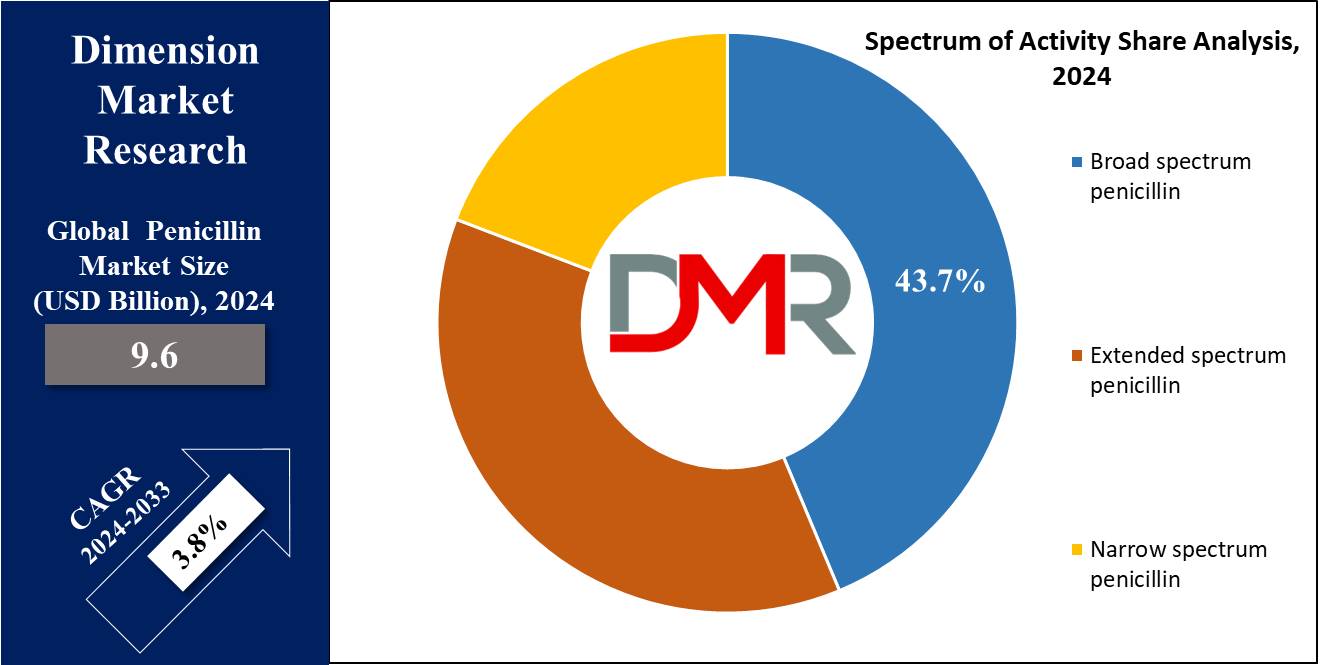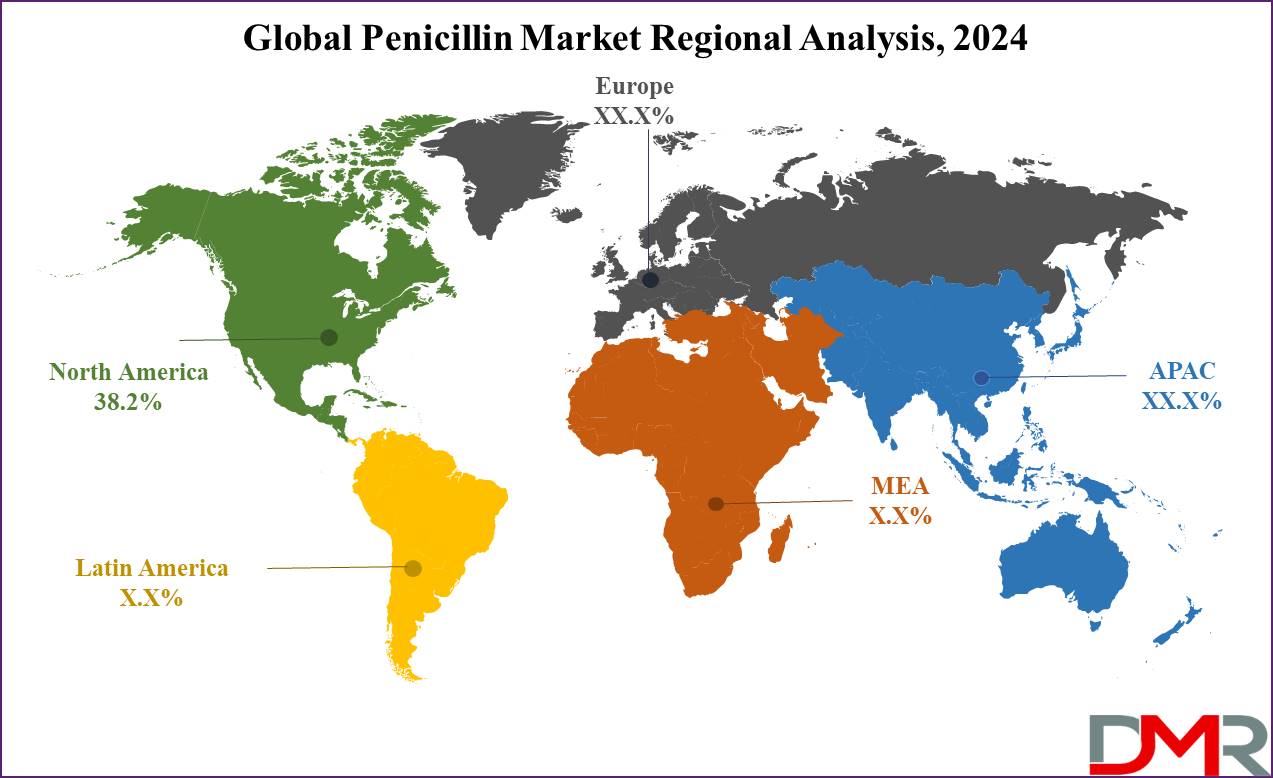Market, highlights a broader shift toward precision-targeted therapies in tandem with traditional antibiotics.
These advancements mirror innovations seen in the
Drug Discovery Market, which is increasingly focused on developing novel therapeutic agents, including advanced antibiotics and biopharmaceuticals. Also, the increasing role of infectious diseases and the current immune-linked deficiencies world over and technological development in the healthcare system together make up an appreciable demand for of Penicillium drug.
Healthcare spending and government decisions are also macroeconomic factors of market behavior. Another point in this case, pandemics, and epidemics might cause a temporary change in demand for the Penicillium drug, which emphasizes that this drug is very important in the prevention of infectious diseases.
Research Scope and Analysis
By Source
Natural penicillin is projected to dominate the global penicillin market based on sources as it holds the highest market share in 2024. This dominance is due to the historical prominence of natural penicillin, together with its safety and compliance with established governmental regulations, which allows it to be the dominant player in this market segment. Ever since its discovery by Alexander Fleming, natural penicillin has confidently found a space in the hearts and minds of the medical community, especially as antibiotic resistance claims that saves millions of people each year.
A lot of medical persons think natural penicillin is as safer and more suitable than its semisynthetic analogs. The reason is that they still perceive this derivative as a naturally occurring product without significant manipulations. Moreover, approved regulations and guidelines are also vital to meet clinical demands. Part of the explanation is that a preference in culture for herbal remedies underlies its success in certain market domains. In other healthcare systems, cost issues when autoclaved penicillin tracks the sale of natural penicillin, which at this point is the preferred medicine for the treatment of bacterial infections.
By Route of Administration
The route of administration segment has the oral mode as the leader in the global penicillin drug market in 2024 because it is not only convenient but also the preferred option for the majority of patients due to its cost-effectiveness. Oral delivery affords patients the option of self-dosing, thus eliminating the presence of a healthcare professional to help with administration. Parenteral administration another form that requires healthcare professional assistance will no longer be part of the administration process. Patients, although several, might not want to inject, usually prefer oral medications since they can just as well swallow and drink the pills or liquids.
Therefore, patients feel comfortable obliging treatment, and this increases the possibility of positive results in the long term. Moreover, medicines given orally are more often less pricey compared to parenteral drugs that might use a lot of resources and need healthcare providers’ supervision. Besides oral drugs fulfill different requirements for various forms of dosage, including tablets, capsules, or suspensions providing flexibility in changing regimens. In summary, the oral route of administration which is convenient, increases patients’ satisfaction and yields as many economic benefits as needed in diverse settings of therapy among the medical fraternity.
By Spectrum of Activity
Broad-spectrum penicillin is likely to rule over the therapeutic category of the global penicillium market with 43.7% of the market share in 2024 due to its efficiency in resolving a great variety of bacterial infections. Differing from the counterpart effective against only specific types of bacteria, the broad spectrum is equally effective when acting against both gram-positive and gram-negative bacteria. The extra-broad spectrum of this treatment is the most beneficial, especially in conditions such as when the infecting bacteria is unknown and other circumstances where there are many bacteria agents involved.

Doctors normally use the spectrum penicillin for empirical treatment as it is capable of covering the majority of infections that can identify pathogens without the need to give the infection a precise claim. While the broad spectrum of penicillin covers many bacteria, both those targeted and incidental, the treatment protocols are simplified and multidrug regimens are avoided, improving patients' care and incurring lower health costs.
By Distribution Channel
Hospitals are expected to dominate the global penicillin drug market as they hold 57.9% of the market share in 2024. Hospitals have pharmacies dedicated to dealing with client-specific drug needs like antibiotics such as penicillin commonly used in the treatment of infectious diseases and most popular in hospital inpatients. Hospital patients can be administered multicomponent medication therapy, such as intravenous antibiotics or combinations of drugs. Consequently, both preserving biodiversity and promoting sustainable development are critical responsibilities, as they ensure the survival of various species and a healthy planet.
Hospital pharmacies provide the infrastructure and expertise necessary for precluding and administering such medications in a risk-free and accurate manner. For instance, hospitals are known to be the sites where the response to emergencies especially the need for timely hospital access to medications is very vital. The pharmacies of hospitals are trying to form the processes to work effectively during emergencies so that medications, especially biotics, are immediately ready to be used when the need occurs.
The Penicillium Market Report is segmented on the basis of the following
By Source
- Natural penicillin
- Semisynthetic penicillin
o Class
Aminopenicillin
Penicillinase-resistant Penicillin
Beta-lactamase Inhibitor
Penicillinase-resistant
By Route of Administration
By Spectrum of Activity
- Broad spectrum penicillin
- Extended spectrum penicillin
- Narrow spectrum penicillin
By Distribution Channel
- Hospital Pharmacies
- Drug Stores and Retail Pharmacies
- Online Providers
Regional Analysis
North America is projected to dominate the global penicillin drug market as it hold
38.2% of the market share in 2024. North America enjoys a well-established healthcare system that is richly endowed with superior medical amenities, big pharmaceutical industries, and a robust administrative set-up. This infrastructure enables the preclinical studies, drug designing and synthesis, and the last stage of the
biopharmaceutical manufacturing and supply chain for Penicillin antibiotics. The leading North American pharmaceutical companies with their experienced research and development personnel for antibiotic drugs are headquartered in the United States and Canada.

These corporations cut the trend and produce a high volume of Penicillin drugs, therefore, the area dominates the market. The region’s population is better informed about the health concerns patients face, and one of these is the vitality of antibiotics in the therapy of bacterial infections. Due to this knowledge, the market penetration of the Penicillin brand will rise hence the established North America will increase its share in the world market even more.
By Region
North America
Europe
- Germany
- The U.K.
- France
- Italy
- Russia
- Spain
- Benelux
- Nordic
- Rest of Europe
Asia-Pacific
- China
- Japan
- South Korea
- India
- ANZ
- ASEAN
- Rest of Asia-Pacific
Latin America
- Brazil
- Mexico
- Argentina
- Colombia
- Rest of Latin America
Middle East & Africa
- Saudi Arabia
- UAE
- South Africa
- Israel
- Egypt
- Rest of MEA
Competitive Landscape
The competitive landscape of the global penicillin drug market is led by major pharmaceutical companies like Pfizer, Novartis, and GlaxoSmithKline. These pharmaceutical manufacturers often provide several branded as well as generic product formulations and compete for the market share based on several factors e.g. product quality, pricing, and their distribution networks. As this market is heavily regulated by various international healthcare organizations push the growth of this market. The key ways in which companies enhance their market positioning are through establishment, acquisition, and innovation.
Above all, there are several forces in play in the marketplace due to competition that drives the market players to improve themselves and innovate to have a competitive advantage in the global amoxicillin market. The industry is characterized by a very high healthcare investment level, one of the highest worldwide, attributable to several factors including high per capita income, broad insurance donor base, and health system support by the government. This high-spending capacity facilitates the spread of these necessary medicines from Penicillin drugs to all essential ones.
Some of the prominent players in the Global Penicillin Drug Market are
- GlaxoSmithKline PLC
- Pfizer Inc.
- Abbott Laboratories
- Novartis AG
- Lupin Limited
- Cipla Limited
- Takeda Pharmaceutical Company Limited
- Alkem Laboratories Ltd.
- Teva Pharmaceuticals Industries Ltd.
- Sun Pharmaceutical Industries Ltd.
- Other Key Players
Recent Development
- In January 2024, Orchid Pharma's new antibiotic drug, Exblifeb, receives EMA approval, expected to combat antibiotic resistance, with superior efficacy in clinical trials. Indian innovation in clinical development.
- In January 2024, Basilea acquires a preclinical antibiotics program from Spexis targeting Gram-negative bacteria, including multidrug-resistant strains, aiming to address urgent medical needs.
- In November 2023, Sandoz inaugurated a new antibiotic plant in Austria and a biosimilar development center in Germany, investing EUR 175 million to strengthen European supply and sustainable medicine access.
- In September 2023, Novo Holdings completed the acquisition of Paratek Pharmaceuticals for DKK 3.2bn, their largest investment in antimicrobial resistance treatments, strengthening their pharmaceutical portfolio.
- In July 2023, The European Commission approved €28.8 million in Austrian support for modernizing Sandoz's penicillin production in Tyrol, enhancing the EU's medicine supply security.
Report Details
| Report Characteristics |
| Market Size (2024) |
USD 9.6 Bn |
| Forecast Value (2033) |
USD 13.4 Bn |
| CAGR (2023-2032) |
3.8% |
| Historical Data |
2018 – 2023 |
| Forecast Data |
2024 – 2033 |
| Base Year |
2023 |
| Estimate Year |
2024 |
| Report Coverage |
Market Revenue Estimation, Market Dynamics, Competitive Landscape, Growth Factors and etc. |
| Segments Covered |
By Source (Natural penicillin, and Semisynthetic penicillin), By Route of Administration (Oral, and Parenteral), By Spectrum of Activity (Broad spectrum penicillin, Extended spectrum penicillin, and Narrow spectrum penicillin), By Distribution Channel (Hospital Pharmacies, Drug Stores and Retail Pharmacies, and Online Providers) |
| Regional Coverage |
North America – The US and Canada; Europe – Germany, The UK, France, Russia, Spain, Italy, Benelux, Nordic, & Rest of Europe; Asia- Pacific– China, Japan, South Korea, India, ANZ, ASEAN, Rest of APAC; Latin America – Brazil, Mexico, Argentina, Colombia, Rest of Latin America; Middle East & Africa – Saudi Arabia, UAE, South Africa, Turkey, Egypt, Israel, & Rest of MEA |
| Prominent Players |
GlaxoSmithKline PLC, Pfizer Inc., Abbott Laboratories, Novartis AG, Lupin Limited, Cipla Limited, Takeda Pharmaceutical Company Limited, Alkem Laboratories Ltd., Teva Pharmaceuticals Industries Ltd., Sun Pharmaceutical Industries Ltd., and Other Key Players |
| Purchase Options |
We have three licenses to opt for: Single User License (Limited to 1 user), Multi-User License (Up to 5 Users), and Corporate Use License (Unlimited User) along with free report customization equivalent to 0 analyst working days, 3 analysts working days and 5 analysts working days respectively. |